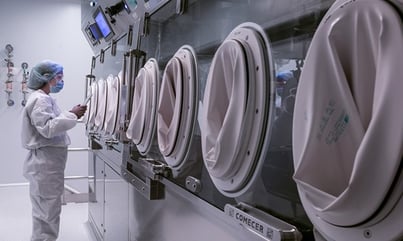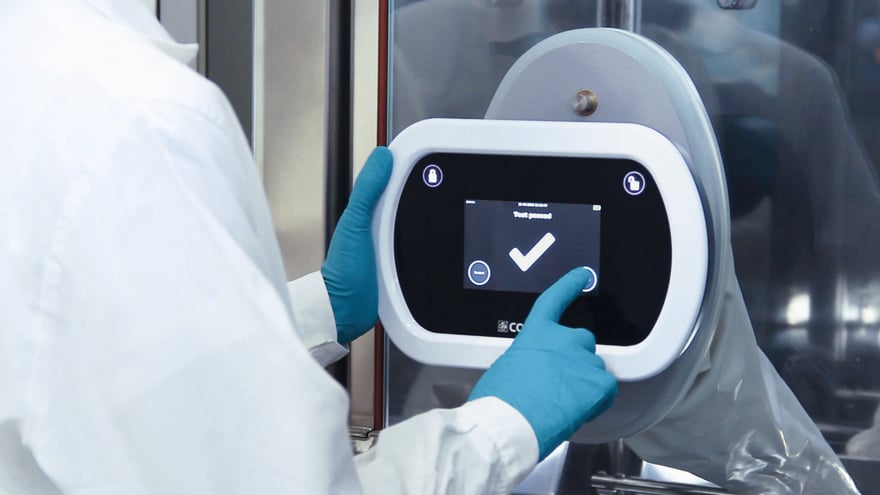Discover the New Annex 1 revision with Comecer's cutting-edge solutions
The Annex 1 Revision 2008 was completed in December 2007 and went into force in March 2009. Officials have since found that even better regulation is needed - specifically in terms of product shortages, recalls, and GMP non-compliance due to a lack of process understanding.

Which led to recently released new Annex 1 Revision 2022.
The changes are motivated by:
- Advancement in Manufacturing technologies since 2008 - including ISO 14644, ICH Q9, and ICH Q10.
- Better align with the manufacturing principles to those presented by the World Health Organization (WHO),
- Pharmaceutical Inspection Cooperation Scheme (PIC/S), European Medicines Agency (EMA) and US Food and Drug Administration (FDA)
The impactful changes in the Annex 1 Revision 2022:
- Expansion from 16 to 51 pages (not including the glossary).
- Multiple new and extended topics, which divides the document into 10 newly defined sections.
- Focus on contamination risk management.
One major sectioning change is the separation and differentiation of Certification (Section 4) and Monitoring (Section 9), which allows for expanded guidance and distinction between premise design/qualification and ongoing routine monitoring. There is a new section that discusses the concept of contamination control strategy (CCS). This section shifts to a new paradigm of incorporating CCS as a central holistic approach to how each aspect of contamination interacts with the facility. There is also a new section that discusses and identifies Quality Risk Management (QRM) as a central principle to defining processes, operations, and limits, and it ties to CCS to balance process against risk. Additionally, as laid out in the new revision, regulations for Environmental Monitoring is essentially the same with a few enhanced descriptions to better align with QRM.
Some of the changes in the revised “Premises” chapter now clearly uses the term “cleanrooms” and outlines the different classes and requirements for classification.
The importance of both “at rest” and “operational” is emphasized, and requirements for total particle concentration and allowable microbial contamination have been slightly changed.
Specific reference is made to the need for periodic re-qualification of cleanrooms and clean air equipment. The use of Restricted Access Barrier Systems (RABS) in addition to isolators as a barrier technology is introduced.
This section also contains a comprehensive description of the design and use of airlocks, along with clear specifications for airflow patterns and air pressure requirements.
Finally, a new requirement is added, namely the need to be able to observe Class A and B areas from the outside.
Partnership with ItelPharma
To be successful in inspections by competent authorities or third parties, it is important to do a full gap assessment. This will show if the update is fully compliant or if there are certain gaps. Comecer has partnered with ItelPharma to do a full gap analysis of our machines with respect to the new version of GMP Annex 1. The detailed result from the study is closely analysed by our R&D and being implemented by modifying the product lines. Highly impacted modifications are later shared with ItelPhartma for confirming the compliance. Related software and documentation changes are also executed along the modifications.
One of those modifications are related to new definitions on the chapter “Equipment”, which dictates the specific design restrictions to be considered on the sampling equipment.
As quoted from Annex 1,
“5.9 Particle counters, including sampling tubing, should be qualified. The manufacturer’s recommended specifications should be considered for tube diameter and bend radii. Tube length should typically be no longer than 1m unless justified and the number of bends should be minimized. Portable particle counters with a short length of sample tubing should be used for classification purposes. Isokinetic sampling heads should be used in unidirectional airflow systems. They should be oriented appropriately and positioned as close as possible to the critical location to ensure that samples are representative.”
Comecer Compliant Solutions:
To make our products compliant with these newly requested specifications, we have modified the already existing provision for sampling equipment in our products. Which implies that the positioning of sampling head and the tubes leading to the particle counter respects the new specifications. We have extended these modifications also to the microbiological sampling. This attention to detail improves the quality and control considerably. Our laminar flow shielded Radiopharma products belonging to TALIA series and MIP LAF series, BBST series, BBST COMBO series, PHAEDRA series, PHAEDRA COMBO series and HELIOS have been modified by this update. Going together with it, new sampling kit options are made available to each product, giving more agility in monitoring the cells. Thus, our existing product lines are being refreshed to be in line with the new GMP Annex 1.
-

TALIA Series
Radiopharmaceuticals
Dispensing Isolator -

MIP LAF SERIES
Laminar Flow Shielded
Cell for Research Activities -

BBST Series
Shielded Isolators for
Dispensing -
 BBST COMBO Series
BBST COMBO Series
Synthesis and
Dispensing Hot Cel -
 PHAEDRA
PHAEDRA
Radiopharmaceutical Dispensing
Isolator for Vials and Syringes -

PHAEDRA COMBO Series
Synthesis and Dispensing
Shielded Isolator -

HELIOS
High-Throughput Aseptic
Isolator for Vials and Syringes Filling
Comecer Solution for Glove Integrity Tester
Going together with it, three new sampling kit options are made available to give more flexibility in monitoring the cells. Thus, our existing product lines are being refreshed to be in line with the new GMP Annex 1.
For ensuring the utmost safety and compliance within pharmaceutical, biotechnological, and medical laboratories, the integrity of isolator systems, particularly the glove components, is paramount. Leak testing of the glove system is a critical process that must be undertaken with a methodology that has been proven to be both effective and suitable for the task at hand.
Recognizing the importance of this, Comecer has developed a specialized solution designed to address these needs with precision and reliability: the Speedy Glove, an automatic portable glove integrity tester.

The Speedy Glove stands out as a revolutionary tool in the field of contamination control and sterile barrier systems. This battery-powered device is engineered to conduct thorough leak testing on gloves affixed to isolators or Restricted Access Barrier Systems (RABS), which demand a rigorous level of separation between the isolated interior environment and the external surroundings. The necessity of this separation cannot be overstated, as it ensures the protection of both the product and personnel from potential contamination risks.
Utilizing a methodical approach, the Speedy Glove executes pressure decay integrity tests, meticulously assessing the glove's ability to maintain a secure barrier. This testing protocol aligns with the stringent requirements outlined in ISO 14644-7 Annex E.5, ensuring that each test conducted adheres to international standards for cleanroom and associated controlled environments.
The application of Speedy Glove extends beyond mere compliance, offering facilities a practical and efficient means to routinely verify the integrity of their critical barrier systems. Its portability allows for flexibility in conducting tests across various locations within a facility, minimizing downtime and enhancing operational efficiency. Furthermore, its user-friendly design ensures that operators can perform tests with minimal training, making it an accessible tool for regular use.
ItelPharma
ItelPharma is the radiopharmaceutical division of ITEL GROUP and has been established as a radiopharmaceutical production facility, that is a GMP (Good Manufacturing Practice) certified pharmaceutical facility authorized by the Italian Drug Agency (AIFA), and produces radiopharmaceuticals for imaging diagnostics, which detect diseases in the fields of oncology, neurology and cardiology.
They offer their experience and expertise in the radiopharmaceutical and nuclear medicine sector and provide experts in the field of Quality Assurance for quality system implementation and assessment. Moreover, their experts carry out a wide range of auditing activities, in order to assess compliance of the site or equipment with the GMP regulations. After all these activities are provided, a final report will be issued including the general state of the system, along with any situations of non-compliance and the proposed action plan to achieve fully regulatory compliance.
With their production expertise, they also carry out qualification activities for classified rooms, isolators, hot cells for radiopharmaceutical handling or dispensing, shielded cells for synthesis modules, synthesis modules, autoclaves, pass-through boxes / materials, refrigerators and climatic chambers. Furthermore, they make their analysis laboratories available for the development and validation of analytical methods for chemical, physical and microbiological quality control; they also perform cleaning procedures of classified rooms, as well as cleaning and process validation activities.
All these activities are performed by a specialized division with trained staff who have extensive knowledge in radioprotection measures and certified equipment.
Contact us
See all news »